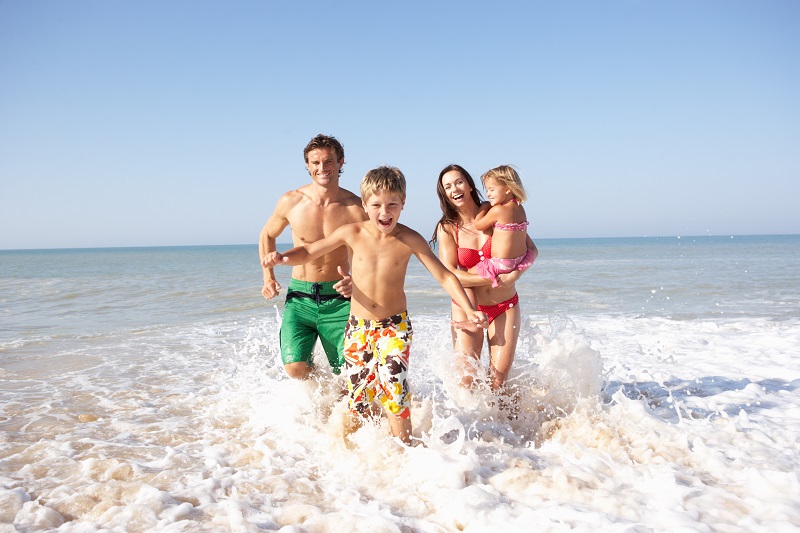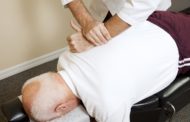The beach can be an amazing time for the whole family. Sitting in the sun, listening to the waves crash, and playing with the kids are really what life is all about when you’re on the beach. There’s tons of stuff to do on the beach. You can build sand castles, play paddleball, toss a frisbee around, go swimming, surfing, skim boarding, or you can just lay back and work on your tan, which, as we all know, takes a great deal of work. Although the beach can be an exciting time for the entire family, it is important to keep safety as the number one priority.
To make your time at the beach fun and safe, here are a few tips that you may consider while at the beach.
- Don’t forget the sunscreen
Depending on the amount of sun by which you are exposed, forgetting the sunscreen can leave you and your family with an enormous amount of pain for the next few days because of a sunburn. “About 90 percent of nonmelanoma skin cancers are associated with exposure to ultraviolet (UV) radiation from the sun” (Koh, Geller, Miller, et al., 1996). Most medical professionals will recommend buying a sunscreen that is SPF 30 or greater. SPF stands for Sun Protective Factor and the number is the average length of time it will take for the skin to turn red. However, keep in the mind that sunscreen may not prevent photo-aging or skin cancer development. If you plan on staying out in the sun for a long period of time, make sure that you carry some sunscreen with you and try to apply it in an area with a lot of shade. It can save your skin.
- Sun Poisoning
Sun poisoning or sun sickness is defined as an extreme case of sunburn. It is so bad, in fact, that you can’t move without severe pain, nausea, or dizziness. Other symptoms include, reddening and blistering skin, swelling, headaches, fever and chills, and constant dehydration. In simple terms, this is what happens to your skin when the sun is baking your body. Yes, you are baking as if you were in the oven. Now that you know what Sun Poisoning is, you should think twice about intentionally forgetting to apply the sunscreen just to work on that tan. Without sunscreen, the average person’s skin may begin burning in as little as 15 minutes of direct exposure to the sun. Do yourself a favor, apply sunscreen.
- Protect your feet
Many people recommend keeping shoes on while walking over a large area of sand, especially on known party beaches, because you never really know what is under the surface. Although many well-known party or bomb-fire locations are known for having a higher number of sharp objects under the sand surface, sharp objects can be a port of any beach. There is always a chance that pieces of broken glass, sharp sticks, or other sharp objects can be lurking under the surface. Aside from sharp objects that may cut your feet, the sand itself can burn your feet on days that range from 85 to 95 degrees and higher. Feet burns hot sand can be classified as first or second degree burns and may cause skin reddening, blisters, and throbbing pain when walking. If the sand is uncomfortable to walk on, don’t be embarrassed to wear your shoes or sandals.
- Don’t drink seawater
We don’t drink seawater, as humans, because it can be deadly for us. Most children ask that one great question: But why do we put it on our food if it is bad for us? The simple answer is that we only eat small amounts of salt, and we eat it while drinking liquids to help dilute the salt, which keeps it at a safe level. Seawater, on the other hand, has high amounts of salt in it, and although our body can ingest small amounts of sodium chloride (salt), seawater has more than the amount that the body can process. “But why?” asks the confused two-year-old. If we eat too much salt, our body cannot make urine because there is more salt than water in the body. Our body needs more water to create urine. Simply put, drinking seawater will make people dehydrated. So don’t drink seawater. If you accidentally drink seawater, make sure to drink plenty of bottled water to cleanse the liver. This will save your life.
- Swim with caution
Swimming in the ocean can fun and great exercise, but it can also be dangerous. If you or your children decide to go swimming, there are a few ways you can ensure the safety of everybody. The most important factor is making sure everybody knows how to swim before entering the water. According to the Centers for Disease Control, “From 2005-2014, there were an average of 3,536 fatal unintentional drownings (non-boating related) annually in the United States — about ten deaths per day” (cdc.gov, 2016). Don’t venture out too far without a lifejacket or a floatation device. The body can get tired quickly from swimming long distances, and most forget that they have to swim back. Even if a person knows how to swim well or is an advanced swimmer, anybody can be a victim of a rip current. “Rip currents are powerful, narrow channels of fast-moving water that are prevalent along the East, Gulf, and West coasts of the U.S., as well as along the shores of the Great Lakes” (oceanservice.noaa.gov, 2015). Click here to learn what to do in case you are caught in a rip current.







